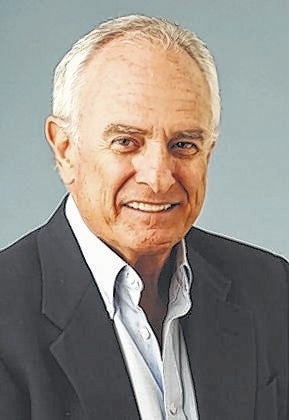Bluegrass memories started my career
Published 12:00 am Monday, November 7, 2016
There was a time before the proliferation of television contracts which now cover every sport, every helmet and every pony tail in the Southeastern Conference (not suggesting any of that is bad by the way) you learned out about other schools in the league by radio. You used your imagination to form images and opinions about each campus and team.
Tiger Stadium on Saturday night in Baton Rouge; Tulane (have you forgotten that the Green Wave was an original member of the SEC?) in carnivorous Tulane Stadium (80,985 capacity), home of the Sugar Bowl; Shields-Watkins Field by the Tennessee River in Knoxville; Lexington’s Stoll Field in the middle of Bluegrass Country and the Hedges of Sanford Stadium in Athens.
The accounts on radio made you want to find a way to see what the screaming Cajuns were like in person, just how big Tulane Stadium was in New Orleans and what the atmosphere was like when Alabama and Auburn played at Legion Field in Birmingham. Stoll Field in Lexington didn’t sound unique but Cawood Ledford, like a latter day Larry Munson, made it sound like the greatest place on earth.
Radio resonated with the fans, but rights fees were miniscule compared to what television brings in today. I can remember in the late ’50s when Richard T. Frick, who owned the New York agency which owned the rights to Georgia football and basketball, came to town to have dinner with Howell Hollis, business manager of Athletics, and Dan Magill, sports information director and a couple of sports writers before a home game. I saw Frick hand over a check to Hollis for $5,000 for Georgia rights fees which Hollis gleefully put into the inside vest pocket of his sports coat. Can you comprehend today that that check was a big deal for the University of Georgia in those times?
It would be decades before the big money scene enveloped college athletics and made five thousand dollars look like a measly tip. With the escalation of rights fees and the gushing of money from all sources, it is difficult for today’s generation to fathom the challenge of yesteryear’s college athletic administrators to balance the budget.
There often is a flashback to those older days when radio was about the only means of attracting fans (other than winning big). Munson and Ledford, John Ferguson of LSU and John Ward of Tennessee all wanted you to be a part of the college football scene. Radio made you want to go there.
I got to know Ledford about the same time as I became acquainted with Munson and always thought that the two best trips on the Georgia schedule were to Nashville—the Grand Ole Opry and Printer’s Alley—and Lexington—Keeneland Race Course and the horse farms.
Even today, I can’t think of a prettier landscape than the bluegrass of Kentucky and the ancillary opportunities for anyone who has any curiosity. I can recall arriving in Lexington when the leaves were at peak and the horses were running at Keeneland, which gets my vote as the prettiest horse track in the country. There often was a nip in the air and a need for a sport coat. In the club house, the well-to-do were smartly dressed with the ladies adorned with a fur on their shoulders and the men in snappy sport coats and ties.
Down at the infield the “other half,” cavorted in blue jeans and sweaters that needed darning at the elbow. Like those in the clubhouse, those with limited means and lesser social standing were serious betters who enjoyed the same thrill of redeeming a winning ticket at the pay window.
In Kentucky, there’s more than the horse tracks at Keeneland and Louisville in the fall. You can follow the bourbon trail and enjoy the distilleries where your favorite bourbon is made. Years ago somebody’s ancestor, dating back to the time of Daniel Boone, figured out there was something about the limestone water that enhanced the taste of bourbon which resulted in the distilling of fine products which are marketed worldwide.
Football, however, has to be the centerpiece of any weekend to Lexington in the fall. Over the years, there have often been some thrilling and exciting games and on occasion, there were games when the elements were harsh, even snow and sleet to contend with.
All time, Georgia has a 55-12-2 record versus Kentucky, even holding an edge at games played in Lexington, 26-7, but some of those victories were hard earned.
Flash back to 1978 when Kentucky held the lead, 16-14, with Georgia having one last chance at victory. The Wildcats yielded yardage grudgingly. Only the determined-give-no-quarter efforts of tailback Willie McClendon gave the Bulldogs the edge. He was knocking linebackers about, edging closer to the Wildcats goal with every snap. This was Dooley ball at its finest. This forward march would not involve the forward pass. Willie right and Willie left. Will he get us to the end zone?
The classic stalemate reached the Kentucky 22 yard line, when the clock dictated that Georgia had to win it with Rex Robinson’s foot. Repeated timeout calls failed to ice Noble Rex. His foot was never more classically true, however. There were three seconds left when the ball sailed through at 17-16. Munson, if you recalled, confirmed it with, “Yeah, Yeah, Yeah!”
The team flew home and I stayed behind with a bottle of Woodford Reserve. And a bowl of burgoo. Yeah, Yeah, Yeah! The high times of Kentucky trips remain at the top of personal flashbacks. It was radio that started my memorable journey.




